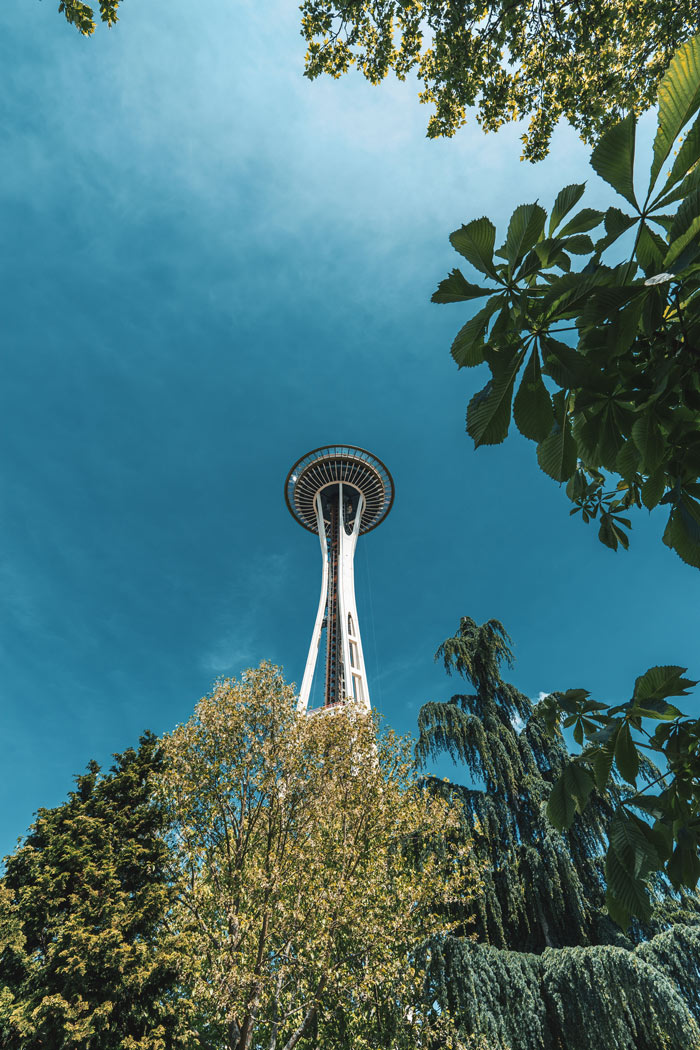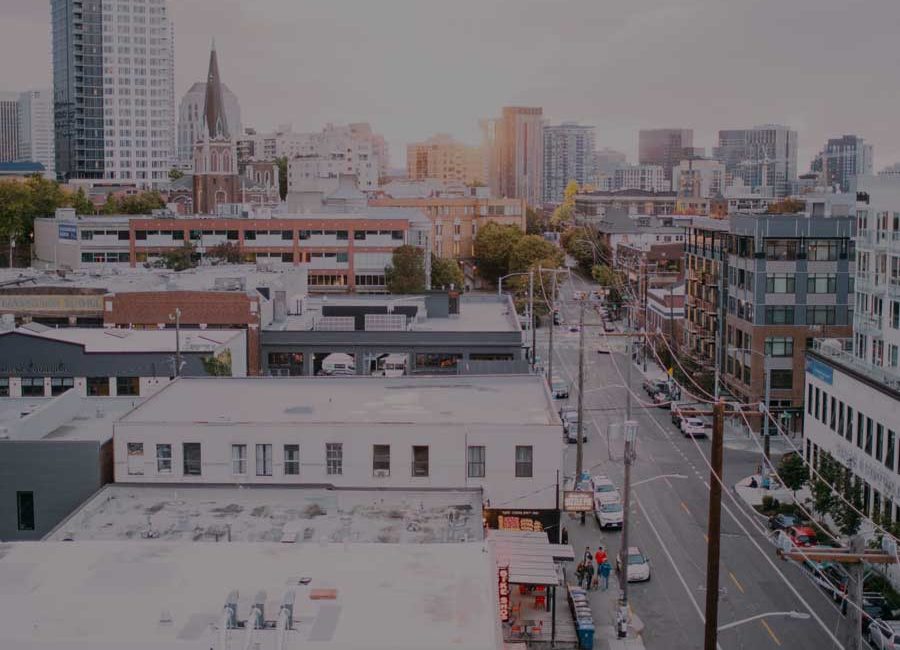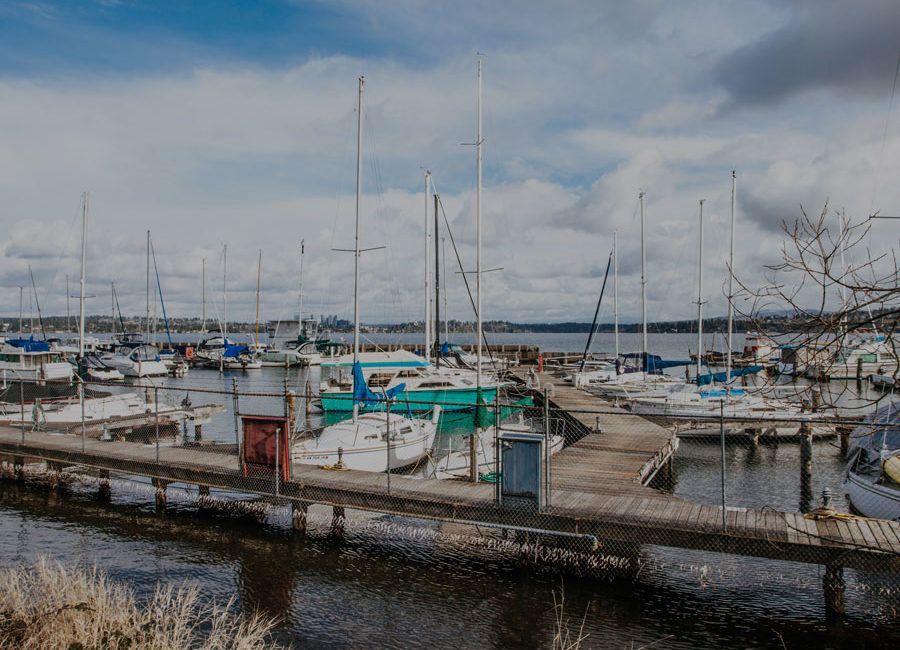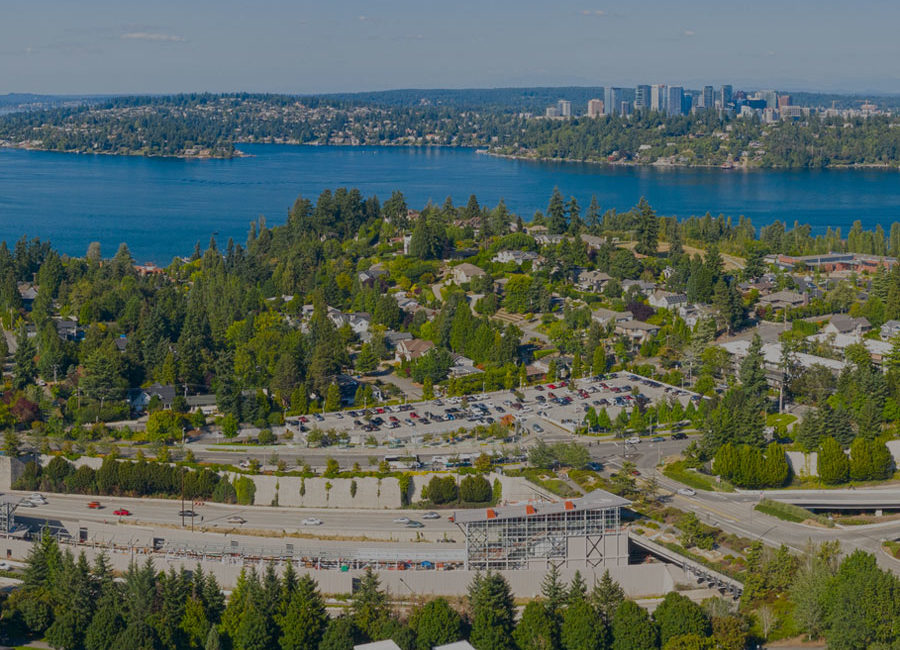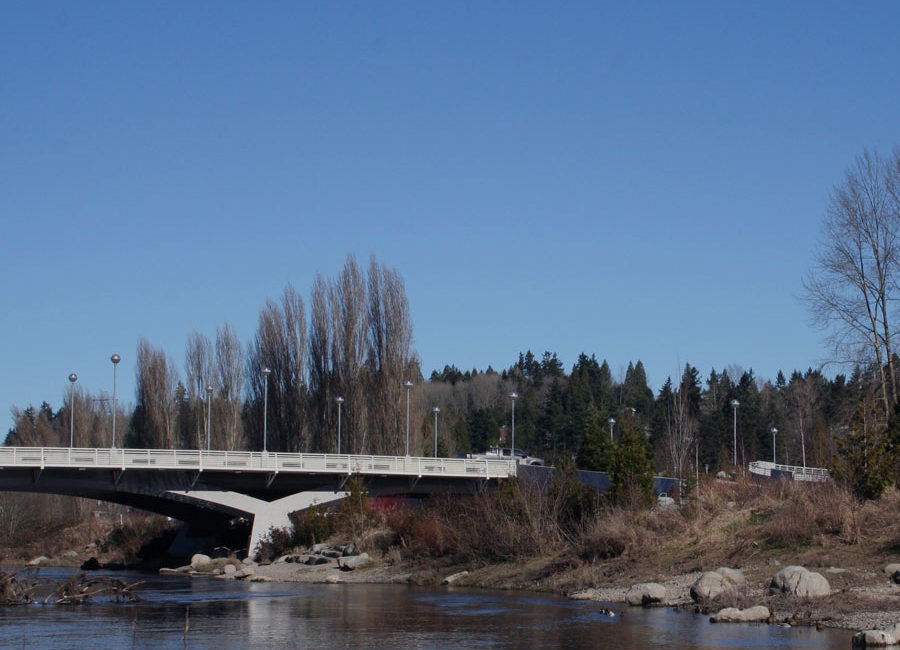Queen Anne: A Quaint
Community on a Hill
With close proximity to Downtown Seattle, beautiful homes, and a good mix of condominiums and apartment buildings, Queen Anne is an ideal neighborhood for a wide mix of people. There are families, professionals, and retirees in charming single-family homes, and plenty of affordable as well as high-end housing options for students and young singles. Queen Anne is a go-to destination for other neighborhood attractions, including shopping and dining as well as the iconic Seattle Center, with the Space Needle and Pacific Science Center.
There’s something for everyone in Queen Anne, and with plenty of grocery store options, clinics, and doctors’ offices, residents often find everything they need within walking distance or a short bus ride or drive down the hill.
2019 Data at a Glance
Average Home Price:
$1,024,533
Average Rent:
$2,311/month
Home price trend:
-4.0% and -4.7%
Walk Score (1-100):
81
Number of Parks:
22
Pros of Living in Queen Anne
Queen Anne is separated from Downtown only by the Belltown neighborhood, making it a perfect neighborhood to live in if you work Downtown and hate long commutes. Its appeal does drive up the cost of living here, however, and rent and home prices are slightly above the Seattle average.
There’s a nice variety of grocery stores, with a Safeway, Trader Joe’s, and Ken’s Market on top of the hill and a Metropolitan Market, QFC, and second Safeway location on the southern base of the hill. Queen Anne also has several famed Seattle restaurants, including Ethan Stowell’s How to Cook a Wolf and the iconic 5 Spot restaurant. It’s also home to numerous coffee shops, boutiques (including an independent bookstore and long-time Queen Anne home and gift shop Stuhlbergs), and small businesses, adding to the neighborhood’s special “small town in a big city” atmosphere.
Despite being pretty hilly, Queen Anne is covered with small green spaces as well as larger parks. There are nearly two dozen parks in the neighborhood, including the famed Kerry Park, where tourists and Seattleites alike flock to take pictures of Seattle’s iconic skyline with the Space Needle in the foreground and Mount Rainier in the back (on a clear day).
Cons of Living in Queen Anne
The two biggest downsides to living on Queen Anne are probably the housing costs and the hill itself. The close proximity to Downtown and amazing views (Elliott Bay and the city skyline to the south, gorgeous sunsets and Magnolia to the west, Ballard and Phinney Ridge to the north, and Lake Union to the east) drive up the cost to live in this quaint community — whether you own or rent. Queen Anne is very walkable on top of the hill and in the areas around its base, but walking up or down is challenging because all of the roads are quite steep. Luckily for people moving on foot, there are dozens of staircases sprinkled around the hill to make the climb a little easier (although not wheelchair-accessible). If it snows, Queen Anne essentially shuts down and most (if not all) of the roadways are closed.
History of Queen Anne, Seattle
Queen Anne’s steep slopes delayed the development of the hill for several years, and before white settlers arrived in Seattle in the mid 1800s, the native tribes didn’t climb the hill much, either. Instead, the Duwamish, Shilshole, and Suquamish tribes hunted and gathered shellfish and fish from around the base of the hill. They also used the meadow that used to exist at the southern side between Elliott Bay and Lake Union for tribal festivals and trapping ducks. The new settlers called this the Potlach Meadows, and David and Louisa Denny spent their honeymoon there in January 1853.
The area was initially named Eden Hill, and although it was slow in development, settlers cleared a military road along an existing Native American trail in the 1860s — where Dexter Avenue is now. David Denny subdivided building lots on 500 acres of Queen Anne in 1872, but it wasn’t until 1878 that the area became more populated as a residential district, thanks to efforts by George Kinnear.
When the Northern Pacific Railroad came to Seattle in 1883, residents were largely using the Queen Anne architectural style from England, leading to an eventual name change for the neighborhood. By 1885, “Queen Anne” was appearing in real estate ads for the neighborhood. The following year, Seattle’s oldest charity — The Seattle Children’s Home — opened its first permanent building in Lower Queen Anne, and in 1887, George Kinnear donated some land on the south slope for use as a park — Kinnear Park.
More homes were built on the east and south slopes of Queen Anne after the Great Fire in 1889, and when the city limits were moved to N. 85th Street in 1891, Queen Anne and its northern community of Ross was absorbed as part of Seattle. The Free Methodist Church also opened the Seattle Seminary in 1891, which later became Seattle Pacific University.
Queen Anne’s real developmental phase commenced in 1902, when electric street cars reached up to the top of the hill. The steep, 18% grade of Queen Anne hill along Queen Anne Avenue was counterbalanced with weights that were put under the street to pull streetcars up the hill and slow them down as they descended, and the street got the nickname “The Counterbalance.”
In 1917, the Lake Washington Ship Canal was completed and the maritime industry in Salmon Bay along Queen Anne’s northwest slope blossomed. By 1930, there were around 30,000 people who called Queen Anne home.
When the U.S. joined World War II, Queen Anne’s Mount Pleasant Cemetery was commandeered by the military and an anti-aircraft gun and aircraft detection equipment were installed to support Seattle’s air defense. During this time, about two dozen soldiers lived on the site, first in tents and then in wood huts.
New radio technology came to Queen Anne in the 1950s, since the hill’s 450-foot summit was ideal for transmitting radio waves across the city. KOMO built their tower in 1952, followed by KIRO in 1958.
Queen Anne was proverbially put on the map by the 1962 Seattle World’s Fair, when the Space Needle was built and the Seattle Center was renovated to include an opera house, food circus, and more. In 1967, the Seattle SuperSonics professional basketball team made its home at the Key Arena.
Today, Queen Anne remains primarily a residential neighborhood. It brings hundreds of thousands of tourists and other visitors to its quaint neighborhood center of Queen Anne Avenue on top of the hill as well as to the attractions and activities at the Seattle Center in Lower Queen Anne, which is also known as Uptown.
Home Prices in Queen Anne, Seattle
The average home price in Queen Anne is $1,024,533, and home values have decreased between -4.0% and -4.7% over the past 12 months. Home prices vary a little bit depending on location, with the median home value in West Queen Anne being $1,041,022 and $1,008,044 being the median in East Queen Anne. Unlike many other areas of the city, where home values are predicted to rise in the next year, Zillow predicts a reduction of value for homes in Queen Anne of -0.2% to -1.0%. While the Seattle average price per square foot is $511, the average in West Queen Anne and East Queen Anne are $571 and $612, respectively.
The average monthly rent for a one-bedroom in Queen Anne is $2,311, which is also significantly higher than the average city-wide.
There’s a nice mix of home styles in Queen Anne, including some that retain the Queen Anne style of architecture. However, there are also plenty of bungalows, Craftsman-style box homes, modern houses, and more. Additionally, there is a good mix of apartment buildings and condominiums, with some brand new construction as well as older buildings.
Walk Score & Transportation in Queen Anne
The walk score in Queen Anne varies by area. In West Queen Anne, the walk score is 82, with a bike and transit score of 61. East Queen Anne has a walk score of 81, with bike and transit scores of 70. The walk score in North Queen Anne near Seattle Pacific University is 70, with a bike score of 65 and a transit score of 63. In Lower Queen Anne, also known as Uptown, the walk score is 92, with a bike score of 69 and a transit score of 72. Across all quadrants of the neighborhood as a whole, the average walk score is just over 81.
Although the Counterbalance streetcars are long gone, there are still a few bus lines that run up and over Queen Anne hill. Route 1 cuts across the east side of the hill along 10th Avenue, from Kinnear to Downtown Seattle, Routes 3 and 4 access Queen Anne from the west side and transport passengers to Downtown Seattle, Madrona, and Judkins Park, and Route 29 crosses the hill north to south, from Ballard and SPU, along Queen Anne Avenue and then to Downtown. The RapidRide D line cuts through the Uptown/south part of Queen Anne from Crown Hill and Ballard to stop at the Seattle Center and end in Downtown.
Unique Gems in Queen Anne
In addition to the Queen Anne Farmers Market, which takes place from 3 p.m. to 7:30 p.m. on Thursdays from late May through early October, there’s also a midsummer neighborhood celebration known as Queen Anne Days. The festival includes a sidewalk sale, food trucks, a beer and wine garden, face painting, and other activities for the whole family.
HeartBeet Organic Superfoods Cafe: Grain bowls, smoothies, juices, salads, soups, and more — HeartBeet is an organic, mostly raw foods cafe with health and wellness in mind. All vegan, dairy-free, and gluten-free, the menu items are as good for you as they are delicious. There are even healthy pies and desserts, and a juice cleanse program to help cleanse and rid your body of toxins.
Macrina Bakery & Cafe: Macrina is one of the top names in the Seattle baking world, and their breads and rolls are served at many of Seattle’s favorite restaurants. Their McGraw cafe serves coffee, breakfast, lunch, and weekend brunch as well as offering pastries, bread, and cakes to take home.
5 Spot: People come from far and wide to get Seattle’s best breakfast at 5 Spot. Named for the five “points” of the continental U.S., the all-day breakfast and lunch eatery has a menu inspired by classics and not-so-classic dishes from all over the nation on a rotating basis. There’s a not-so-early bird menu with $8 specials served from 7 a.m. to 10 a.m. on weekdays, and a big weekend brunch offered on Saturdays and Sundays from 8 a.m. to 4 p.m. Get here early, though, since the restaurant tends to fill up fast because it’s so popular with the locals and visitors alike.
Parsons Gardens: Just a few blocks away from the busy viewpoint of Kerry Park, Parsons Gardens is a garden paradise that gets missed on most people’s radar. It’s truly a hidden gem, perfect for quiet picnics on its grassy lawn or sipping a coffee or tea on one of its wood benches. Originally the family garden of Reginald H. Parsons, the park was given to the city by the family’s children in 1956. It’s sometimes used for small wedding ceremonies, but otherwise, it’s open to the public. Grab a picnic lunch and your bocce or croquet set, and head to this pretty little Queen Anne park.
B&E Meats & Seafood: For many years, this butcher shop was A&J Meats, and when the owners wanted to retire, the neighborhood was very concerned that it would go away forever. Luckily, the Seattle-area establishment B&E Meats & Seafood took over, and Queen Anne continues to get great quality meat and seafood from this wonderful neighborhood butcher shop. They have a fantastic selection, amazing service, and game-processing and cooking instruction guidance, and there’s even a wine shop next door where you can find the perfect pairing!

